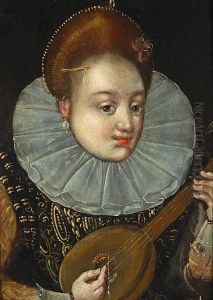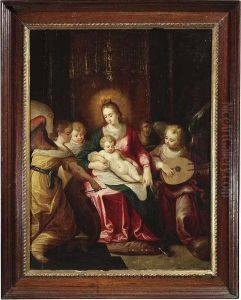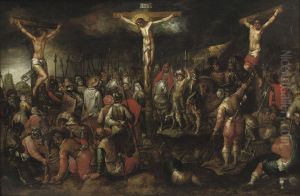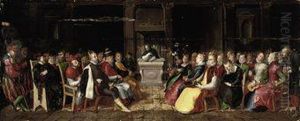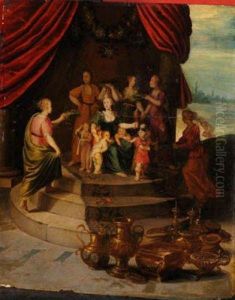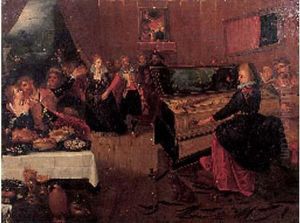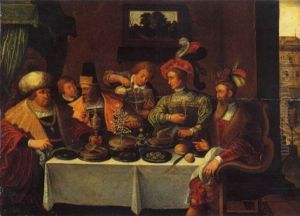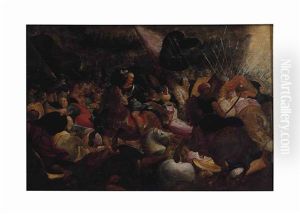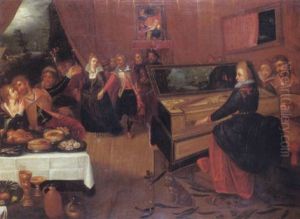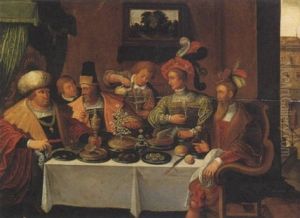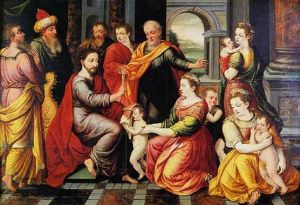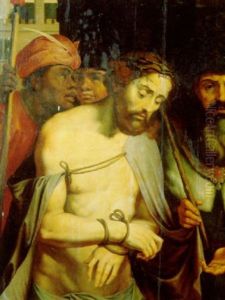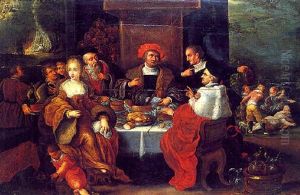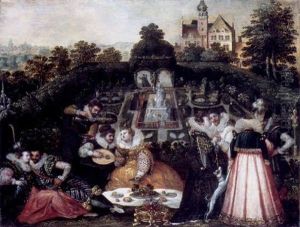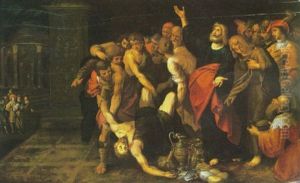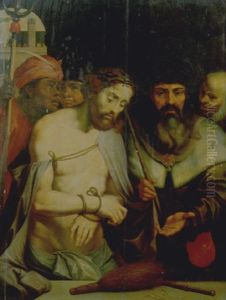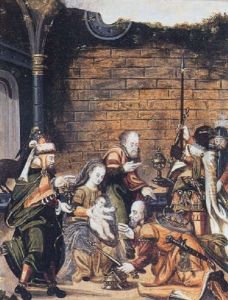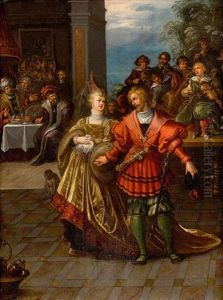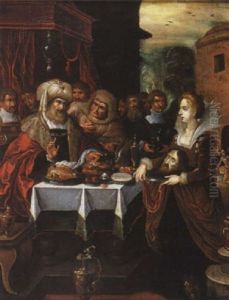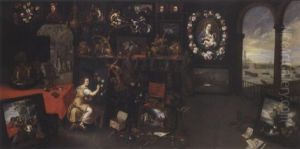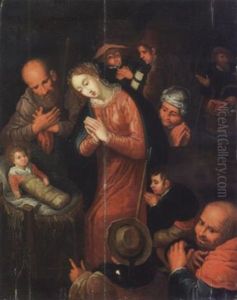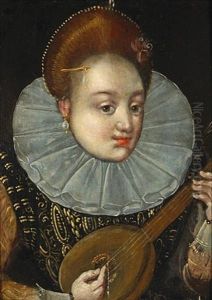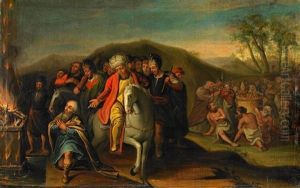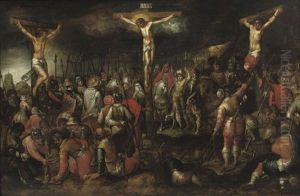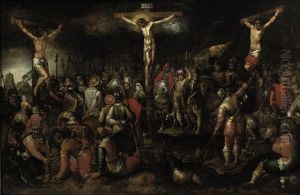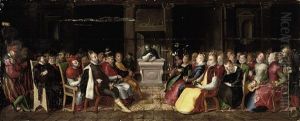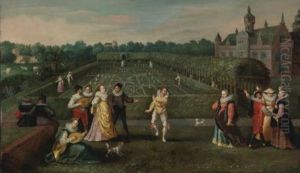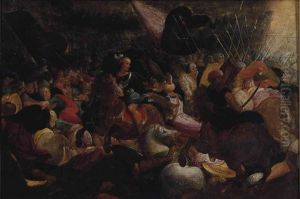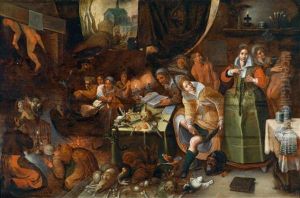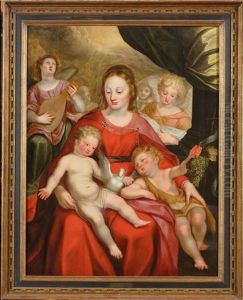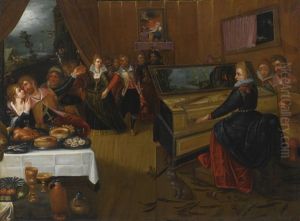Hieronymus I Francken Paintings
Hieronymus I Francken, also known as Hieronymus Francken the Elder, was a Flemish painter born in Herentals in 1540. He came from a family that played a significant role in the development of Flemish art during the 16th and 17th centuries. His brothers, Frans Francken I and Ambrosius Francken I, were also painters, and his son, Hieronymus II Francken, carried on the family tradition.
Hieronymus Francken I's artistic career flourished in the city of Antwerp, which was a major hub for the Northern Renaissance and Baroque art. He became a master in the Antwerp Guild of Saint Luke in 1561, indicating that he had completed his training and was recognized as a professional artist. Although there is limited information about his training, it is believed that he may have been a pupil of Frans Floris, a prominent Flemish Renaissance painter.
Throughout his career, Hieronymus I distinguished himself as a painter of religious scenes, historical tableaux, and genre scenes. His style was influenced by Italian mannerism, which emphasized artificial elegance and elongated forms. This was not unusual for Flemish artists of his time, many of whom were influenced by Italian art either through direct travel to Italy or through the Italianate works that circulated in the Low Countries.
Hieronymus I Francken's work is characterized by its fine detail, use of color, and intricate compositions. Some of his notable works include 'The Last Supper' and 'The Crucifixion', both of which exhibit his skill in rendering biblical narratives with both emotion and precision.
Hieronymus I Francken died in Antwerp in 1610. His legacy persisted through his son and nephews, who continued to produce art in the distinctively detailed and decorative style that had become a hallmark of the Francken family. The Franckens played a crucial role in the artistic life of Antwerp for several generations and their works remain an integral part of the study of Flemish art history.
